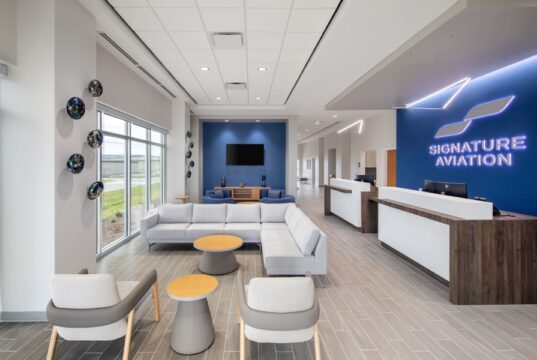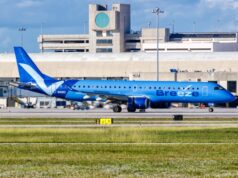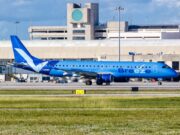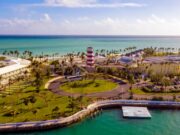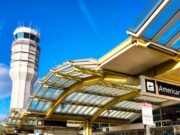
Federal regulation 14 CFR 91.169 is a key regulatory requirement pilots are mandated to follow during the planning stage of an IFR cross-country. Due to its complexity, it has become a commonly shared weak area for a number of students preparing for the Instrument Practical Test. Poor understanding, but mostly lack to attention to detail can potentially lead to a violation of FAR 91.169. In order to ensure compliance, the pilot is expected to carefully examine multiple sources in a logical sequence. Rushing can certainly result in overlooked items. With that in mind, what is intended here is to provide a more in-depth explanation of the aforementioned regulation, while clarifying any uncertainties you may have about it.
One question that should be asked during the planning process of an IFR cross-country is – Do I need an alternate today? 14 CFR 91.169 (b) (2) (i) states that an alternate airport is not required if “for at least 1 hour before and for 1 hour after the estimated time of arrival the ceiling will be at least 2000 feet above the airport elevation and the visibility will be at least 3 statute miles.” To help remember those conditions of the rule, use “1-2-3 ” as great memory aid. In addition, if the destination airport does not have a published IAP, an alternate must be filed regardless of the forecasted weather (14 CFR 91.169 (b) (1)).
Approved sources of weather forecasts for the purposes of alternate requirements are:
A. Terminal Aerodrome Forecast (TAF) is considered a primary source. According to the 2010 AC 00-45G “Aviation Weather Services,” a TAF is a concise statement of the “expected meteorological conditions significant to aviation for a specific time period within five statute miles (SM) of the center of the airport’s runway complex (terminal).” Consequently, referencing a TAF as a “forecast source” when the alternate field is more than 5 miles from the nearest TAF station would be invalid. This is when an Area Forecast must be used.
B. Area Forecast (FA) for use when the destination airport is not covered by a TAF.
In the process of selecting alternates, there are multiple sources to carefully examine before making the final decision. It is always recommended to be on the conservative side when questioning the legality of selecting a particular airport as an alternate. Organize your thoughts by first looking at published instrument approaches for the proposed alternate. If there aren’t any, 14 CFR 91.169 (c) (2) outlines that you can still file that airport as long as the ceiling and visibility forecasted allow a descent from the MEA, approach, and land under basic VFR. If conditions do not warrant such a maneuver, you must think about “standard alternate minimums:”
- If there is a precision instrument approach available at the alternate airport, the ceiling must be at least 600 feet and the visibility 2 statute miles that airport to qualify as a valid alternate (14 CFR 91.169 (c)(1) (i) (A).
- If there are only non-precision approaches, the requirements are slightly higher: 800 feet and 2 statute miles of visibility (14 CFR 91.169 (c)(1) (i) (B).
Once again, those are standard alternate minimums. Most airports do not have standard minimums. The pilot shall refer to each of the published instrument approaches available at the alternate airport and look for specific non-standard minimums:

At the same time, the pilot should look for an “NA” symbol on the top left corner of the notes section of the approach procedure. This symbol (NA: Not Authorized) essentially means that the pilot cannot use that specific approach for alternate purposes. A representation of the referred symbol is included below:

Always remember, the forecasted weather is not the sole factor that comes into play when deciding the legality of the alternate. Specific aircraft manufacturer’s specifications and limitations are elements to be considered as well. For example, the manufacturer might require the alternate airport to have approaches other than RNAV. Make sure to look in your aircraft AFM or POH for specifics. Also, remember to look for NOTAMs, not only at the destination, but also at the proposed alternate airport and ensure that the navigation aid linked to the instrument approach that will back up your alternate decision is fully operational (such as the localizer, glideslope, VOR, NDB, etc.). Failure to review NOTAMs before every flight would not only be in violation of 14 CFR 91.169 because of the aforementioned reason, but also of the Preflight Action requirements (14 CFR FAR 91.103).
To conclude, keep in mind that even if you are not legally required to file an alternate, you should, as a safe and prudent pilot, become familiar with possible alternates available. Always have a back-up plan. Meteorological conditions are subject to change and cannot be always accurately forecasted. Having a plan-B will enhance your situational awareness, decision-making skills and, ultimately lead to a successful outcome in the event that the flight cannot be completed as planned.



























































